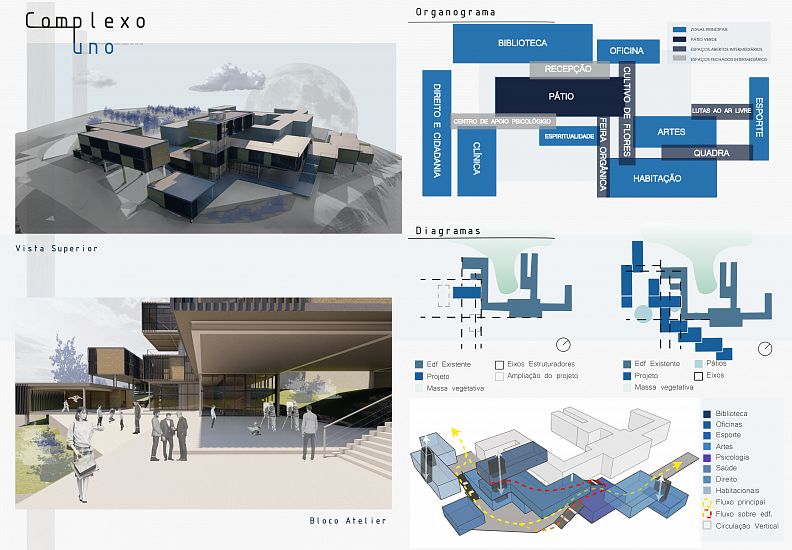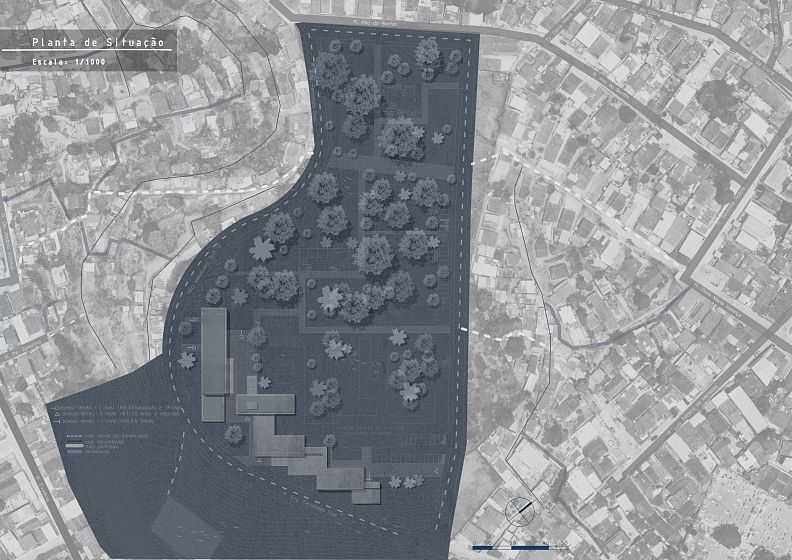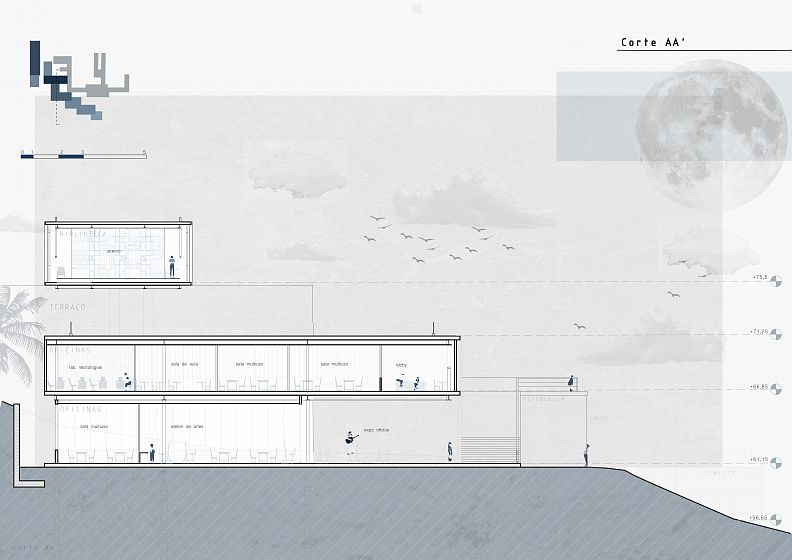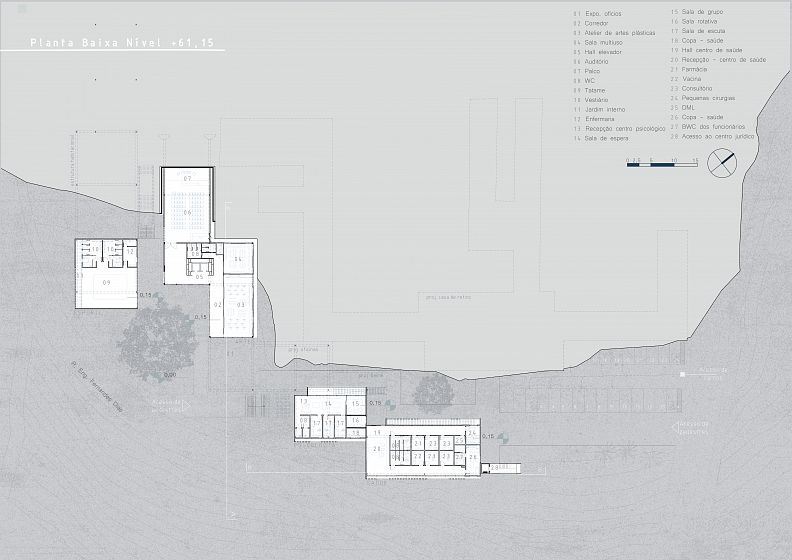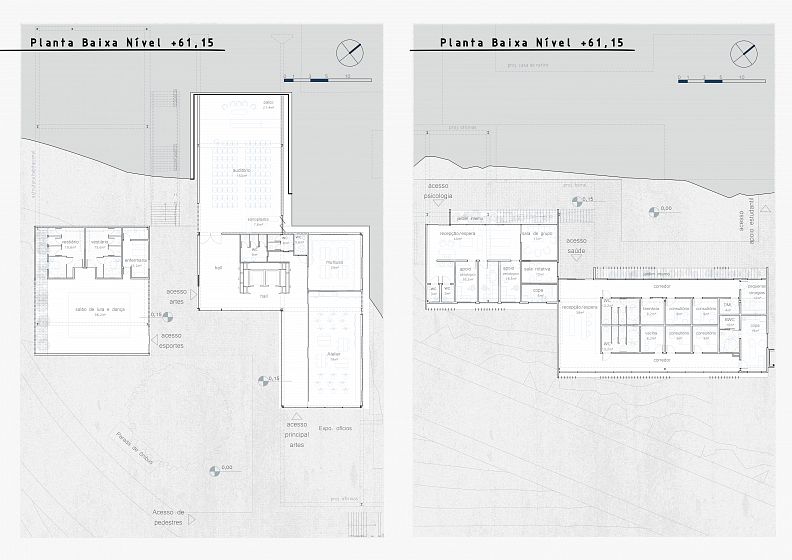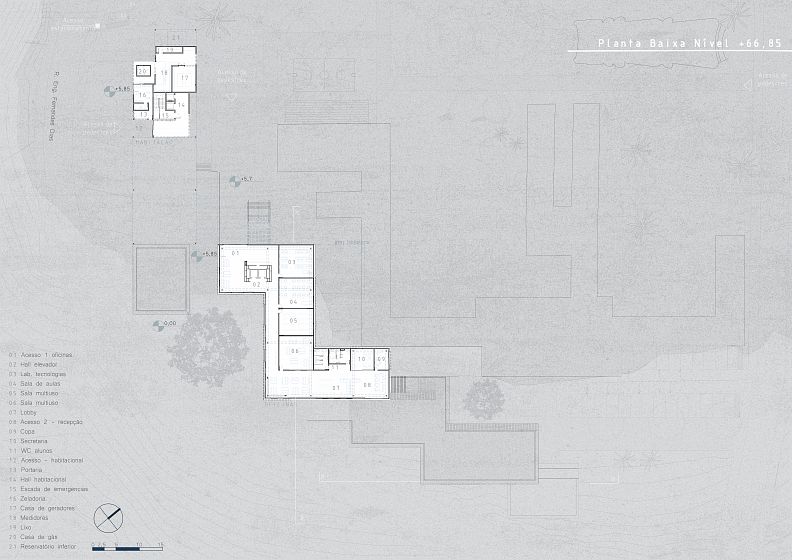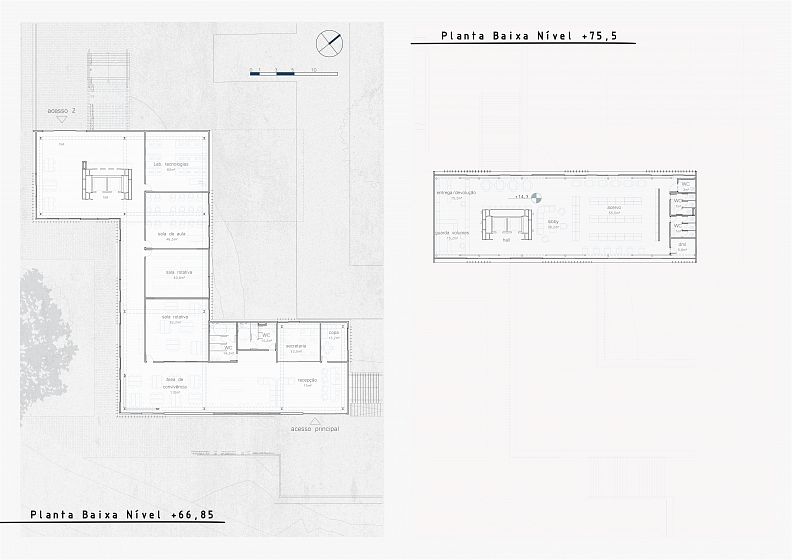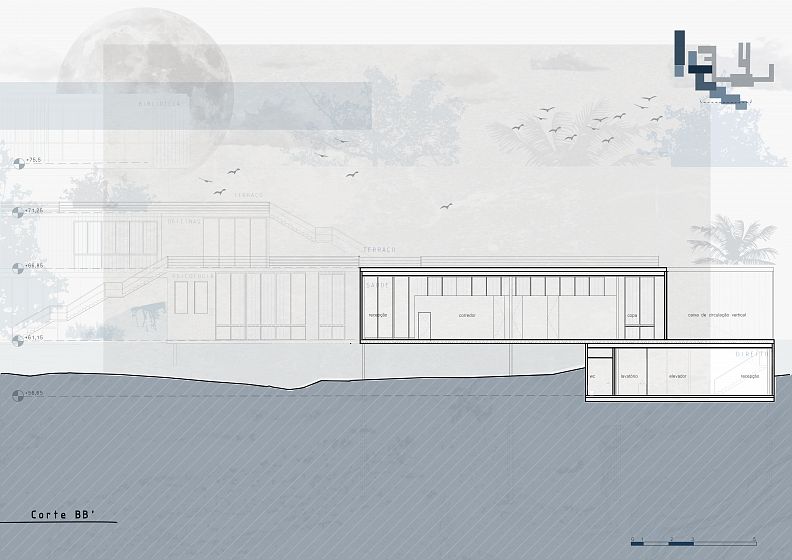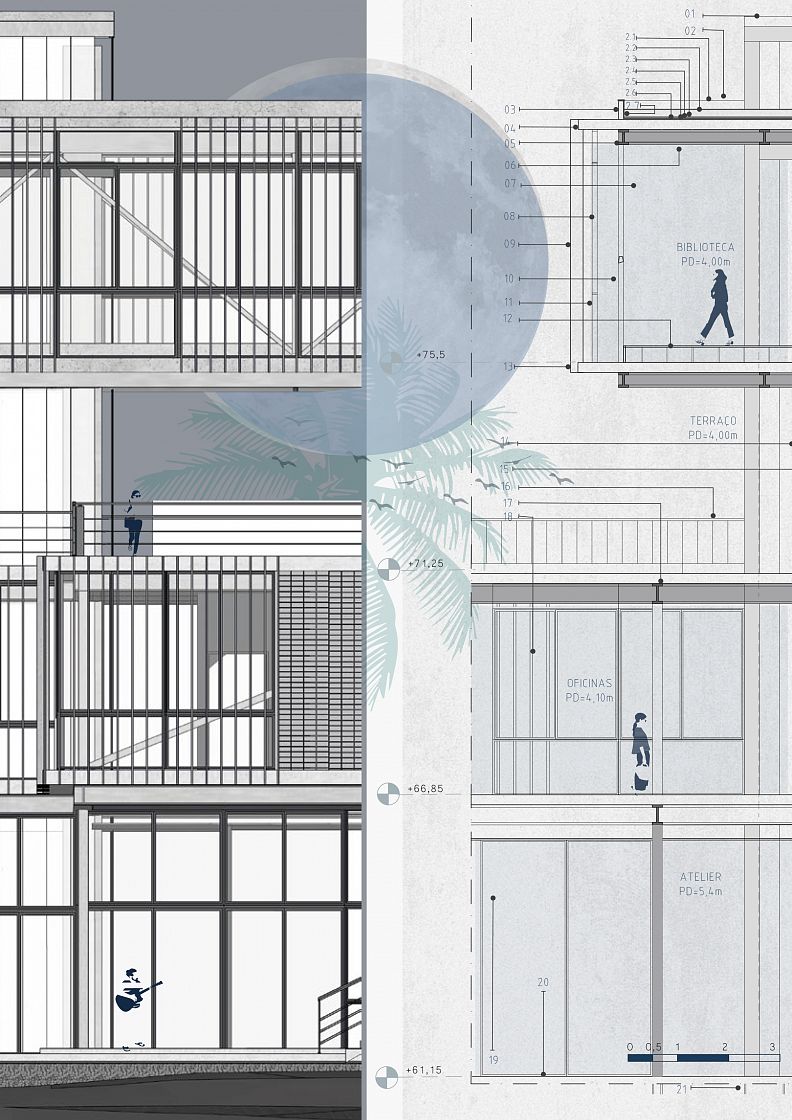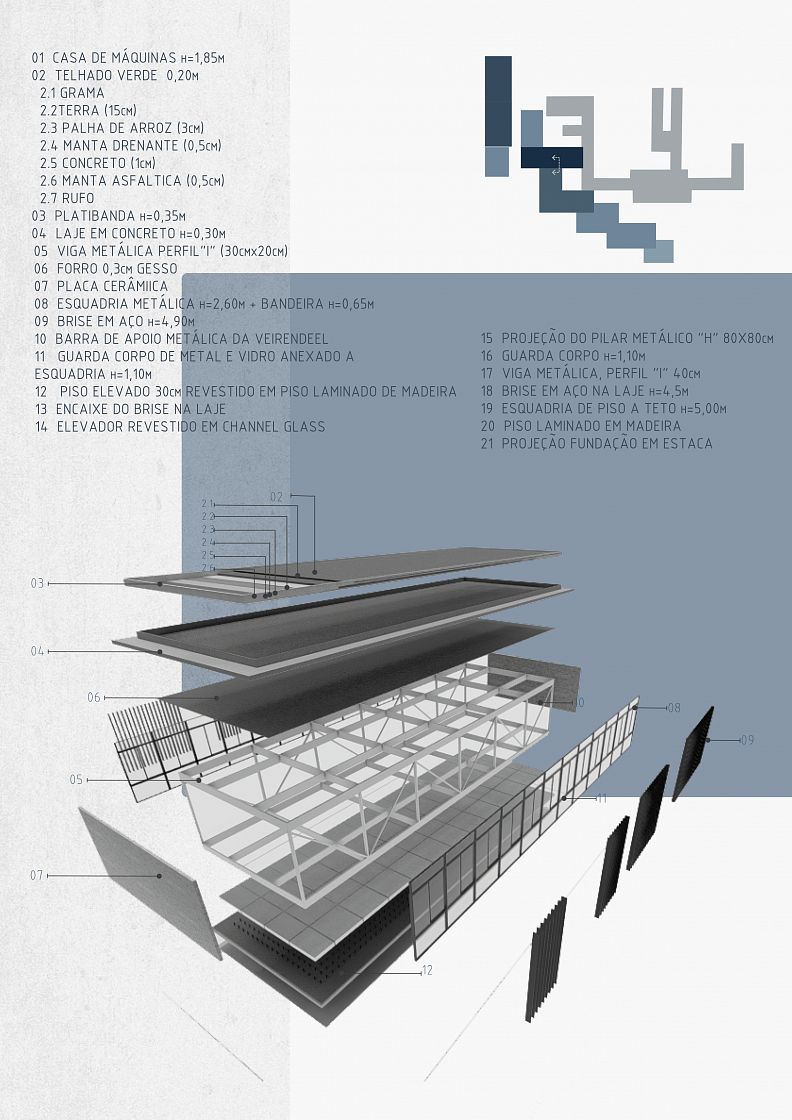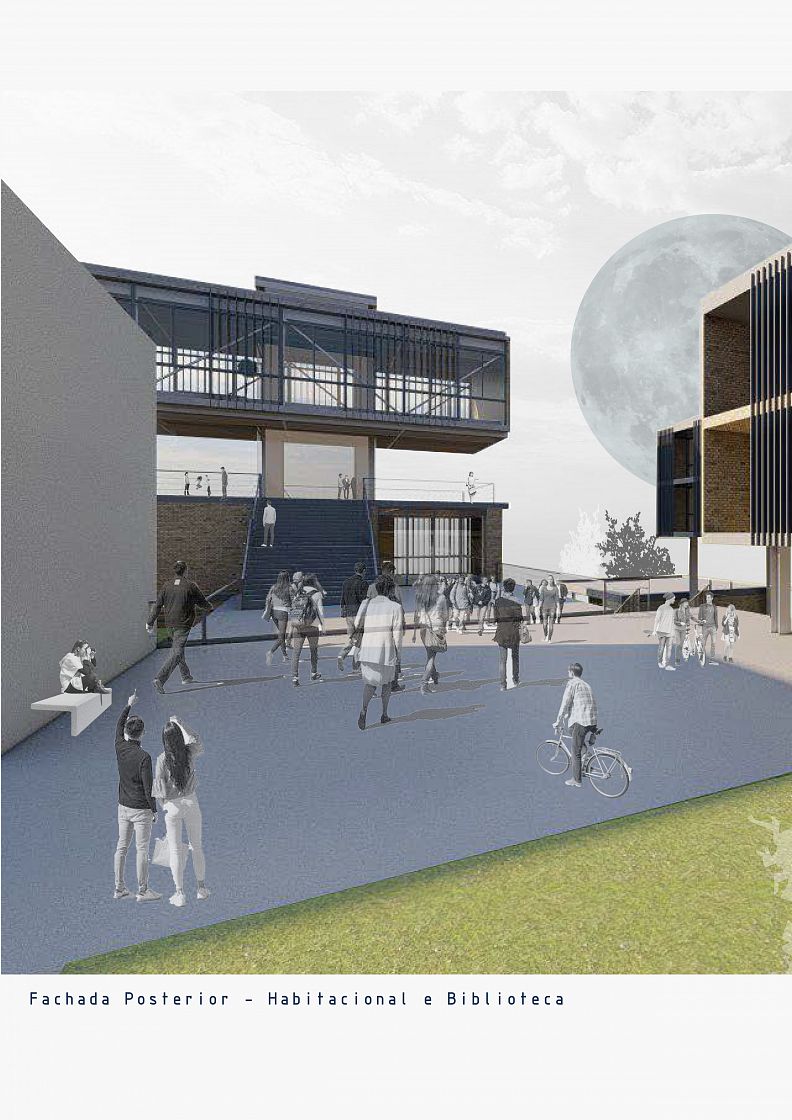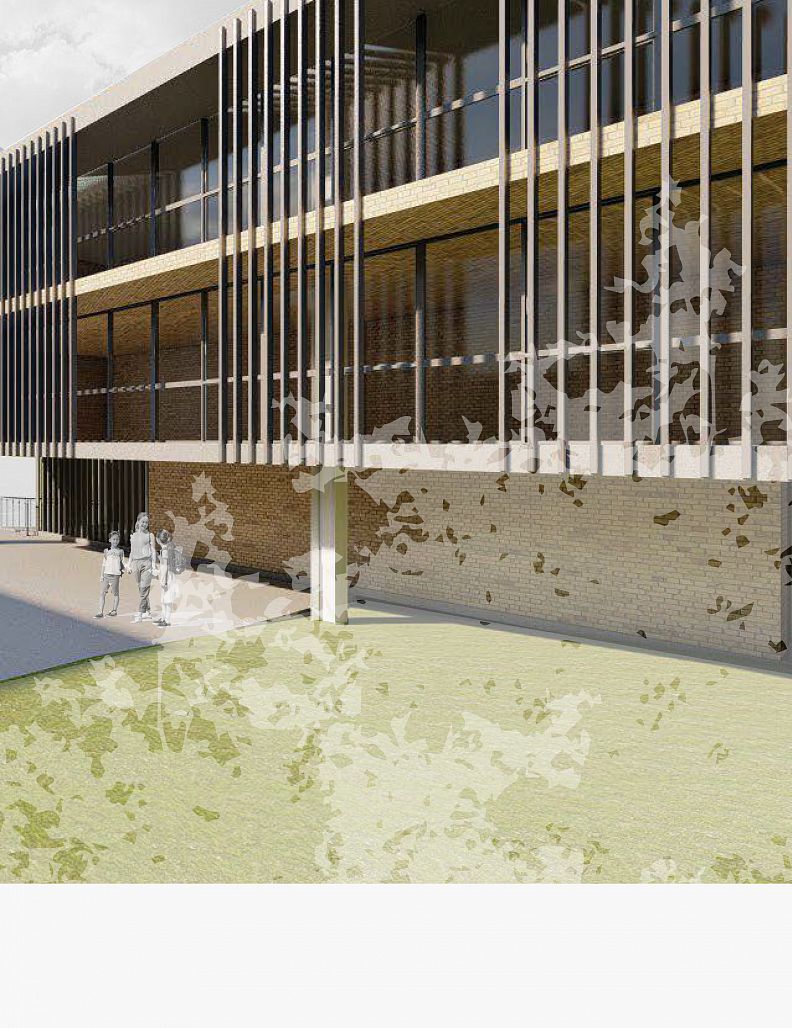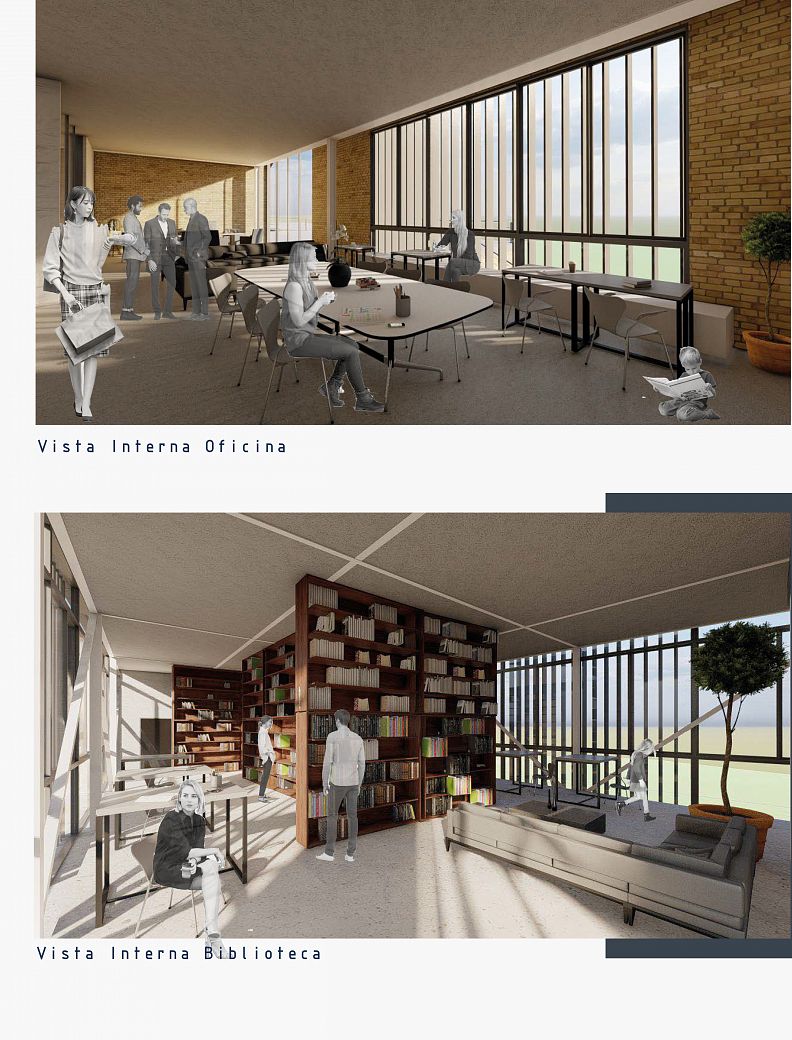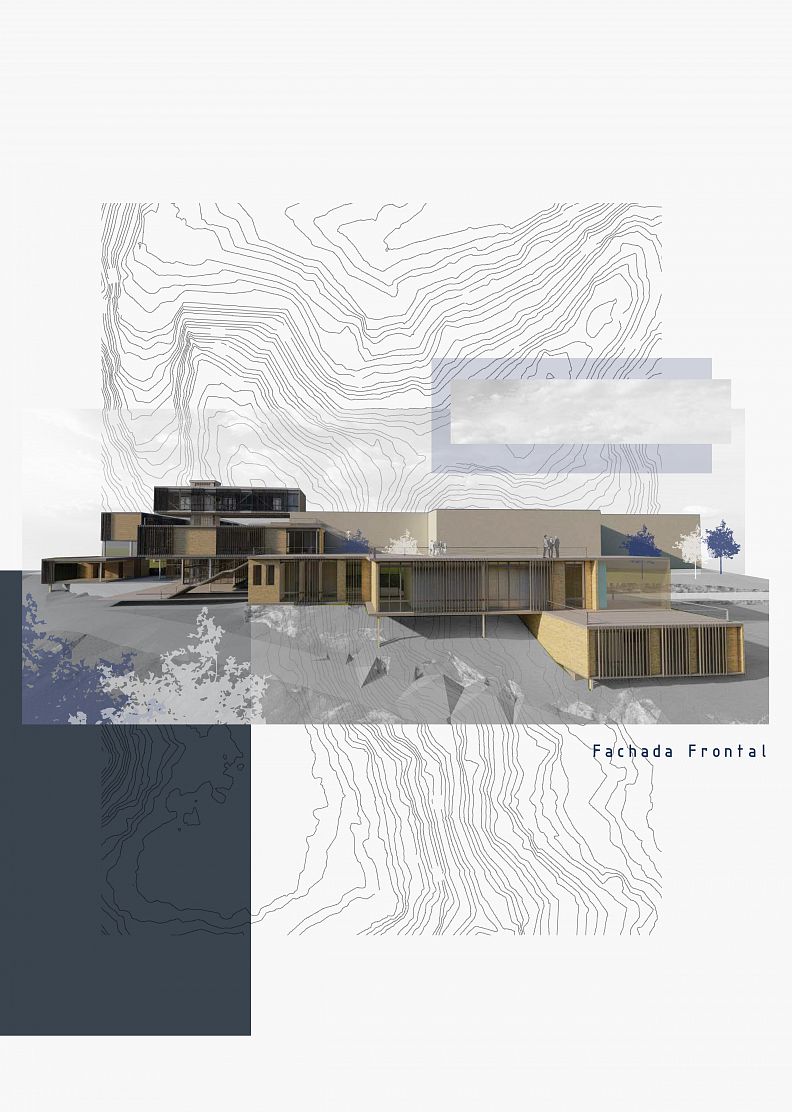Complex Uno

Idea projektu
According to Jan Gehl, in order to keep a city alive it is essential that people feel invited to stay or walk around the place. Thus, to create a more sustainable city, that embraces human needs, the Catholic University of Pernambuco intends to create an extension center with the objective of encourage students to provide services to the local community. The idea is to create equipment capable of housing various activities that contribute for the social improvement of the community, in partnership with the government, residents and students.
The “UNICAP Integral Campus” will be implemented where the “Casa de retiro da Companhia de Jesus”. The terrain is located on the top of the hill, where is a dense vegetative mass, closed and surrounded by a wall, and also by a part of the topography, where currently finds a football field for community use, together with
some residences that invaded part of the land, when it is still it had not been walled. The land of about 75 hectares is inserted in the neighborhood of “Caixa D’Água, Olinda – Pernambuco”, a poor region, it is surrounded by six other neighborhoods in Olinda, which nearby are segregated by topography, and three other neighborhoods in the Recife located on the second bank of the Beberibe River. The proposal is develop complex equipment that aggregates the potential of the area and create a new space capable of translating present needs and of its habitants, following guidelines established in the books “Complex Buildings”, a + t and “Sistemas Arquitectónicos Contemporáneos”, Josep Montaner.
Popis projektu
1 - Complex typologies
Complex typologies are designation buildings that seek to adapt the architecture to new social, political and ecological technologies. They line up through the relation of collectivity and organization, aesthetic and social, complexity and readability. These types are: Generator, Connector, Mixer and Storyteller.
Considering the characteristics of the Site that carries a lot of social, cultural and spatial information, we list socio-spatial aspects that speak about the reality of the area and about what the site itself has to offer to the project, the topography and morphology of the houses. Thus, through the guidelines pointed out by UNICAP and the analysis of the area, it was defined that the project needs a central feature, which evokes the socio-spatial morphology of the site and that its structure is able to recreate itself over time, in order to accommodate different uses and these same uses receive modeling capacity, depending on the needs and human occupation for the architectural instrument that we will build. Then, it was chosen, among the typologies studied, the Generator, for being able to create timeless spaces with the capacity to self-transform.
2 - Lead
The central idea of the design process is to use the characteristics of the site, analyzed according to the previous paragraph, translating them and applying them to the project:
INTERLINED: relationship with the barriers and the differences in level that it provides to the landscape. This idea of “going up and down” can also be seen in the relationships of existing houses that do not have a pattern of templates between them.
AGGLOMERATIONS: inspiration in the urban layout of the informal city and the union between residential agglomerations. These agglomerations create more dense and disordered floods and gaps. In addition to the connection relationship between the parts that make up the whole built.
BIOPHILIA: Despite being closed and distributed disproportionately, the vegetative mass of the area is a strong point of the territory, since it is responsible for the creation of microclimate in the studied land, bringing visual and comfort benefits. When evidenced in an architectural project, it brings users closer to nature and improves their relationship with nature.
3 - Program
This project aims to achieve coexistence between spaces and people, through sports, culture and education, being incorporated as a program: Library, workshop, law and citizenship, clinic, spirituality, arts, housing and sports.
From these zones, possible common spaces were identified to interconnect them. Thus, a equipment that explores the continuity of external spaces with internal spaces was born, through the use of visual and spatial permeability with stairs and voids - patio -, which when associated with the building's terraces allow the continuity of living spaces, diluting the boundaries between public and private, closed and open.
4 - Architectural Systems
Montaner in the book “Contemporary Architectural Systems” seeks to relate through systems: architecture, urbanism and landscape, presents the project in ways that better adapt to the context, valuing spaces between themselves, public and private. That being said, it was chosen among the systems analyzed by him, the MAT-Building, allows the creation of an interlaced mesh, the relationships between full and empty with the surroundings, has the potential for adaptability on the terrain, bringing the possibility of building growth or regress based on maximum interconnection and association between parties.
5- The Project
The project was born from the application of MAT-Building, placing the retreat house as the main structurer of the system, with the creation of a mesh with the potential to expand itself adapting to the pre-existing building, breaking axes for the location of the blocks of the new building. We started with the library block, in order to highlight it as a fundamental role in a society, as a heart of the project, a landmark. And from that, we were structuring other blocks, through the existing axes or proportion of measure.
The building has the function of being a bridge, in addition to the unevenness of the terrain - making the route more fluid and dynamic -, as well as the morphology of the existing building with the houses surrounding the site. Thus, we apply the concept: Interleaved - differences in template - Clusters - Interrelationships between open and closed spaces - and Biophilia - Creation of patios (both on the ground and in the building) and framing the landscape.
Technické informace
The "Complexo Uno" develops through topography at different levels, from level +56.55 (heights added considering the "Estrada de Água Cumpridas", level 0), here the block dedicated to legal services, on the top floor of the building, Library, level +75.5, a building of approximately 24.4 m in height was built to take advantage of the scale of the topography to express itself in the landscape. There are four floors of built spaces, plus the upper courtyard, where the library block overlaps resting on the existing building and framing the greenery landscape. Counting approximately 102 meters in length, from the apartment block to the legal services block, the construction of approximately 2,900m² is developed in 11 blocks, one of them dedicated to legal services, one for psychological assistance, health space facilities, an atelier of arts and auditorium, a sports pavilion, workshops rooms and a library. In order to obtain greater gaps and more lightness in the construction, the structure systems adopted metallic beams, reinforced concrete slabs and fences in ceramic blocks. In the library block, the veirendel structure allows the span of 22 meters, to allow the sensation of this block floating on the built complex, the metal pillars were hidden from the vertical circulation block and two other pillars that support the other end of the block , are inserted inside the pre-existing building, allowing the block to rest smoothly on the old building. Steel brises were used in the glass facades, to partially allow visual permeability and mainly to guarantee thermal comfort in the building without the total dependence of an artificial refrigeration system. Also as a measure of environmental comfort, green roof coverings were inserted in all slabs that do not have visitor access. The structure, the body guards, handrails, frames and windshields present the same materiality, to confer harmony on the facade. The facade is also composed of glass, Channel Glass, in the central elevator, and the fences are clad externally with ceramic plate, a material that resembles the one used in the popular buildings present on the site.
Spoluautoři
Andréa Câmara (teacher), Ana Luisa Rolim (teacher)
